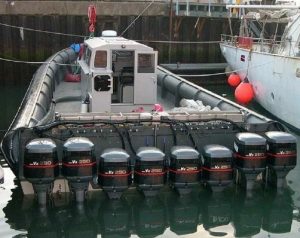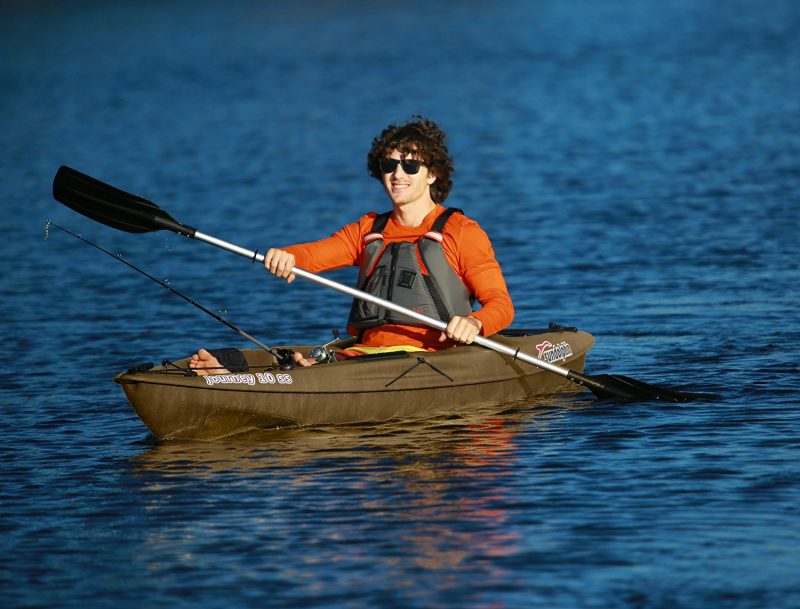With all of the New Orleans fishing and fishing out of Venice LA, just about everyone in Louisiana has a boat. Whether you are looking at a new boat and motor or you are looking to freshen your old boat up for the Spring fishing season with a new motor, choosing the right design is important. One of the largest investments in your boat is the type of outboard motor. We will give a brief discussion of the differences between the 2 stroke and 4 stroke outboard motor for your next boat.
Many people are tasked with making a choice between a 2-stroke and a 4-stroke outboard motor for their fishing vessel. There are many factors that play a big part when choosing one over the other. Ever since its invention and release to the public, the 2-stroke outboard motor dominated the marine market. The man credited with producing the first reliable outboard motor was Ole Evinrude. In 1909 Ole produced a 2-stroke outboard motor that ran on an oil and gas mixture that eventually led to the creation of the Evinrude Motor Company. This 2-stroke design was the go-to power plant for almost all recreational boating. From small flat boats to larger offshore fishing rigs, the 2-stroke remained king for many decades. That is until recent years with new developments in technology helping the 4-stroke slide into the marine markets.
Difference Between a 2 Stroke and a 4 Stroke Motor
The 4 Stroke Motor
In the early years the 4-stroke marine outboards were large and very expensive to maintain. Developments over the years have helped the 4-stroke shed some weight to be closer to a 2-stroke of comparable output. Much like cars and trucks, consumers have some choices between EFI and DFI systems also. Both of which are much more efficient than carbureted engines. Although most of the smaller output motors around 5hp and 10hp are still carbureted. When it comes to the big block outboards of 150hp and 300hp, fuel injection is the way to go for efficiency over the long run.
Some of the things needed to consider when purchasing a new outboard, or a used one, are what types of activities will the motor be used for, what type of boat it will be installed on, locations to be running the boat, and cost of maintenance just to name a few. In the past 2-stroke motors were very load at high speeds and have a rough idle compared to a 4-stroke motor. While this is true for the most part, new technology and other advancements have made some 2-strokes almost as quiet as their 4-stroke counterparts. People wanting takeoff power have usually gone to the 2-stroke for the torque off the line. With advances in performance the 4-stroke now has takeoff power and long run efficiency to go with it. There are many models that are supercharged for increased performance and we all love forced induction.
 With quieter running and smoother idle a 4-stroke may be the way to go for trolling but maintenance costs are higher than with a 2-stroke. However, some of the newer 2-stroke Evinrude motors offer smoother idle, quieter running, and improved economy while keeping the simplicity of 2-stroke maintenance. If long runs are the primary use then the smooth operation and fuel economy of the 4-stroke may be where it’s at. If the primary location is protected waters a 4-stroke may be the only choice other than paddles. Another thing to keep in mind is that spare motor we rarely use but may come to depend on at some time.
With quieter running and smoother idle a 4-stroke may be the way to go for trolling but maintenance costs are higher than with a 2-stroke. However, some of the newer 2-stroke Evinrude motors offer smoother idle, quieter running, and improved economy while keeping the simplicity of 2-stroke maintenance. If long runs are the primary use then the smooth operation and fuel economy of the 4-stroke may be where it’s at. If the primary location is protected waters a 4-stroke may be the only choice other than paddles. Another thing to keep in mind is that spare motor we rarely use but may come to depend on at some time.
Whichever way you decide to go for your fishing vessel keep all the tasks you will perform when boating as well as the performance recommendations of the boat manufacturer in mind before making a final decision. An outboard is a rather large purchase for most people and a wrong buy can mean a lot of aggravation, frustration, and financial headaches down the road. Compare the pros and cons of each motor on your vessel and make an educated and confidant choice to power your outings on the water.



